SEP 26 2006
O.k. Daisy here u go:
I will list each muscle over the next few days.
Short Lateral Rotators of the Hip
(From North to South in this order stacked)
Piriformis
Gemellus Superior
Obturator internus
Gemellus Inferior
Obturator Externus
Quadratus femoris
All
insert into greater trochanter of the femur. These muscles go mostly from the back of the trochanter to the back of the pelvis.
-These muscles are often over used and tightness can occur in the pelvic floor and anus as well.
-A person with no butt may have overly tight lateral rotator muscles because this will bring the coccyx in like a dog who tucks it’s tale between it’s legs.
-Antagonists = Hip Flexors : iliacus, psoas, pectineus, anterior adductors, TFL, Rectus Femoris,
-All laterally rotate hip as we step forward, change direction, and mostly to stabilize the hip joint especially when the leg is extended.
Important for posture and dynamic core support
1)
Piriformis
Axial/appendicular connection from the spine to the leg. It affects the sacrum by pulling down and forward below the sacroiliac joint, and there fore it posteriorly tilts the pelvis..
-
Origin: The anterior (front) part of the sacrum, the part of the spine in the gluteal region, and from the gluteal surface of the ilium (as well as the sacro-iliac joint capsule and the sacrotuberous ligament)
-
Insertion: It exits the pelvis through the greater sciatic foramen to insert on the greater trochanter of the femur
-
Antagonist is the posas which again pulls anteriorly on the pelvis, but like the psoas (both go to the femur) they both pull the pelvis into extension.
-Pyrimidial shaped muscle
-
Name Meaning- Latin for Pear shaped
-
Nerve to Piriformis innervates the piriformis muscle
-
Stretch 1:
Sit with one leg straight out in front. Hold onto the ankle of your other leg and pull it directly towards your chest.
-
Stretch 2:
Lie face down and bend one leg under your stomach, then lean towards the ground.
Medical Issues:
Piriformis syndrome is a rare neuromuscular disorder that occurs when the piriformis muscle compresses or irritates the sciatic nerve-the largest nerve in the body. The piriformis muscle is a narrow muscle located in the buttocks. Compression of the sciatic nerve causes pain-frequently described as tingling or numbness-in the buttocks and along the nerve, often down to the leg. Pain (or a dull ache) is the most common and obvious symptom associated with piriformis syndrome. This is most often experienced deep within the hip and buttocks region, but can also be experienced anywhere from the lower back to the lower leg.
Weakness, stiffness and a general restriction of movement are also quite common in sufferers of piriformis syndrome. Even tingling and numbness in the legs can be experienced.
Treatment :
Generally, treatment for the disorder begins with stretching exercises and massage. Anti-inflammatory drugs may be prescribed. Cessation of running, bicycling, or similar activities may be advised. A corticosteroid injection near where the piriformis muscle and the sciatic nerve meet may provide temporary relief. In some cases, surgery is recommended
Overload (or training errors): Piriformis syndrome is commonly associated with sports that require a lot of running, change of direction or weight bearing activity. However, piriformis syndrome is not only found in athletes. In fact, a large proportion of reported cases occur in people who lead a sedentary lifestyle. Other overload causes include:
• Exercising on hard surfaces, like concrete;
• Exercising on uneven ground;
• Beginning an exercise program after a long lay-off period;
• Increasing exercise intensity or duration too quickly;
• Exercising in worn out or ill fitting shoes; and
• Sitting for long periods of time.


 Please Scroll Down to See Forums Below
Please Scroll Down to See Forums Below 





















